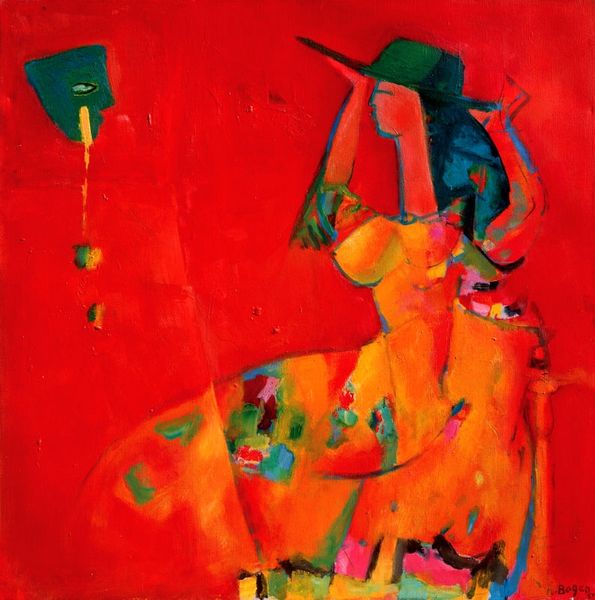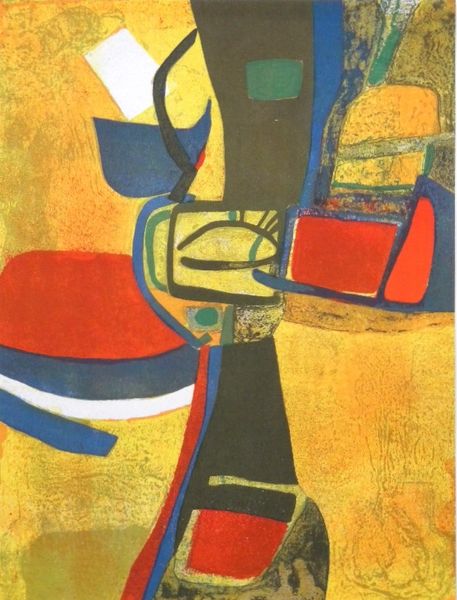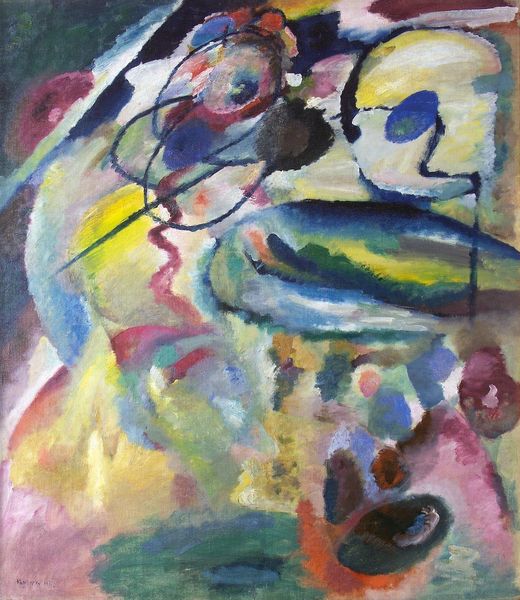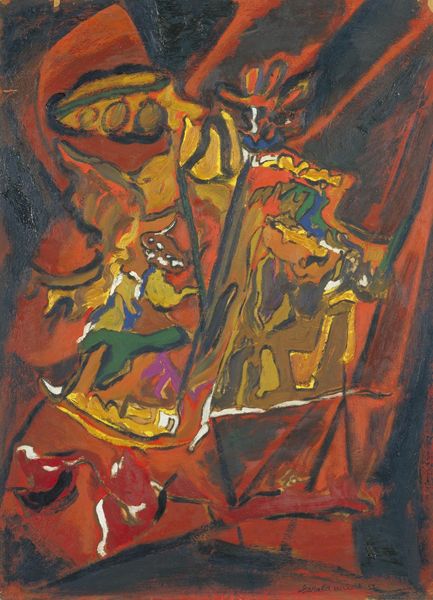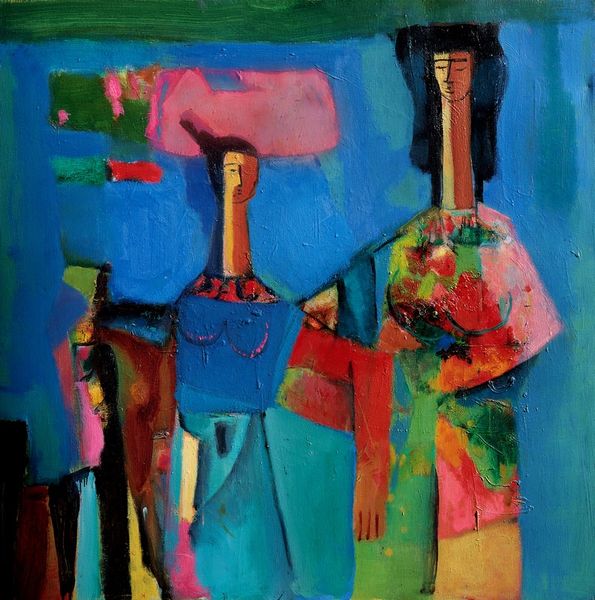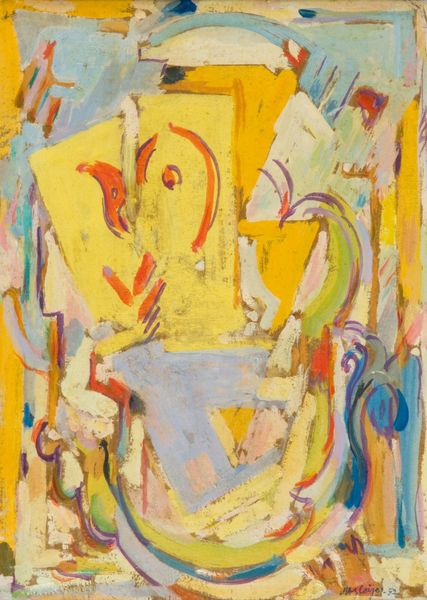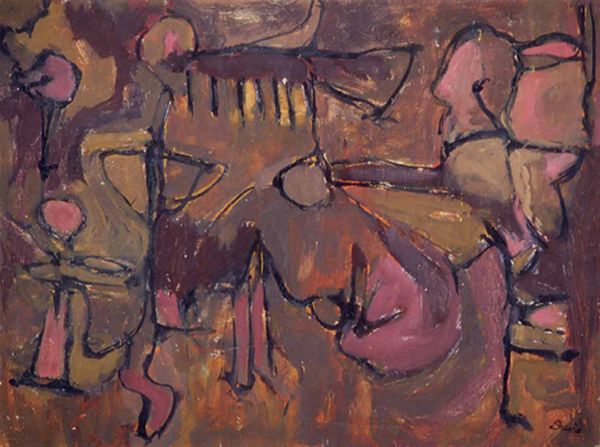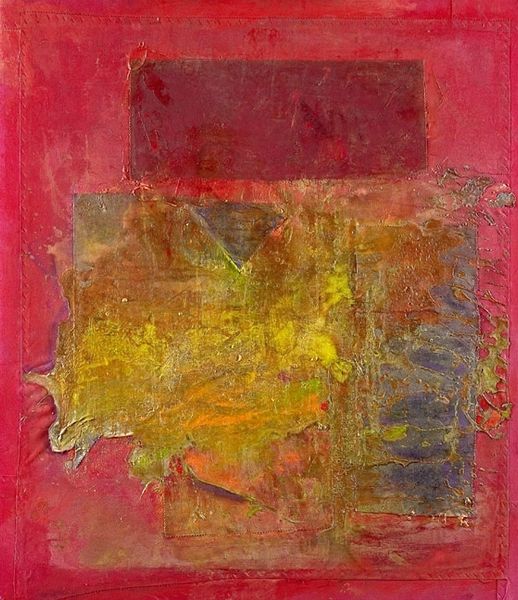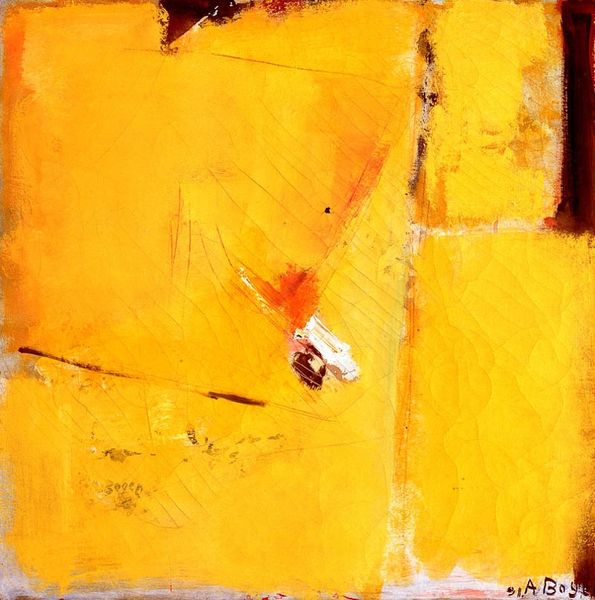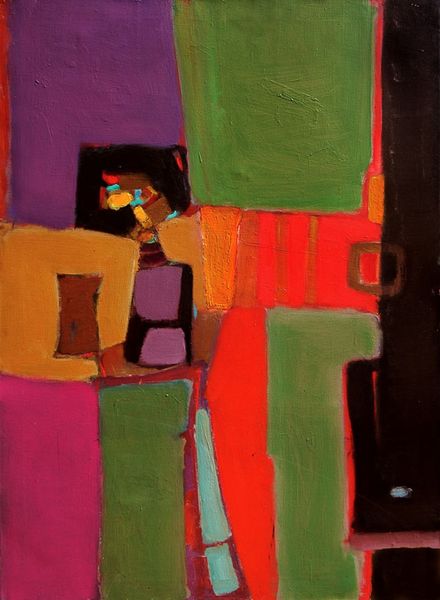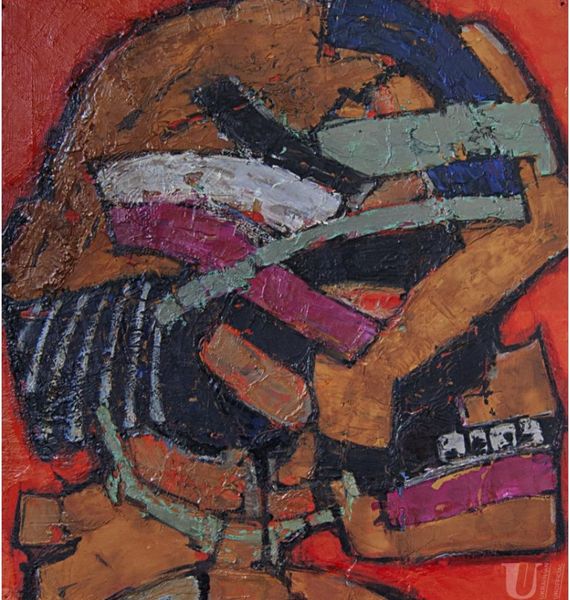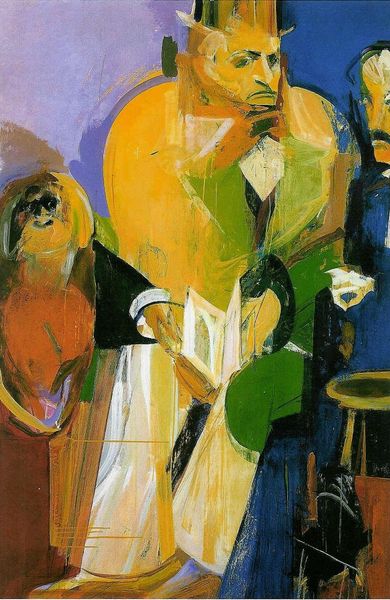
Copyright: Alexander Bogen,Fair Use
Curator: Here we have Alexander Bogen’s "Dialogue", created in 1991 using acrylic paint. A swirl of neo-expressionist figuration with nods to fauvism. What’s your immediate impression? Editor: My goodness, what a vivid exchange! I'm immediately struck by the sheer vibrancy. Look at the pigment intensity; a joyous conversation in blocks of bright color that shouldn’t harmonize but do. And those almost childlike renderings… they feel intensely felt. Curator: Absolutely. Bogen’s work here exemplifies post-impressionism, especially in how he distorts form to prioritize emotional expression and abstract compositions. This emphasis shifts away from traditional mimetic representation of observed reality. Let's talk about the materiality - acrylic offers so many interesting textures if employed with vigor as appears here, Editor: I wonder how Bogen layered the paint here? Those thick impasto strokes suggest an urgency in application, almost like a sculptural process. This reminds me of Gutai artists using industrial materials in performance to capture motion and physicality in two-dimensional surfaces! Look how the textures interplay. Curator: Exactly! Think of acrylic as a distinctly post-war medium that allows artists to easily create layers with diverse techniques from staining to blending or texturing – it facilitates freedom in form. This almost Fauvist rendering certainly highlights materiality with the thick bright colors in a portrait form. Editor: Is it though? The subjects, with that almost cartoonish dog, seem less figures than shapes enacting symbolic exchanges through the colors, brush strokes, texture, and how the planes overlap—which calls to mind performativity between different classes, ideologies… even different artforms? What are they trying to convey through form rather than feature? Curator: Well, perhaps that tension between individual emotion and mass societal exchange is intentional? The “dialogue” might be a broader comment on that era’s—or any era’s—push and pull between those forces. Editor: Perhaps, after considering the paint handling and composition I must say it’s as interesting a dialogue between modes and method. Curator: For me too. I keep rethinking the relation between Bogen’s material methods and expressionist soul that opens to interpretations.
Comments
No comments
Be the first to comment and join the conversation on the ultimate creative platform.
